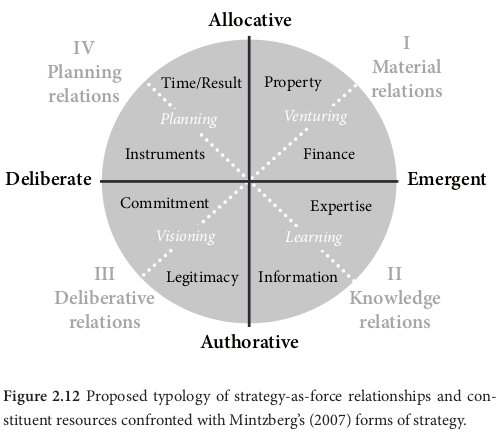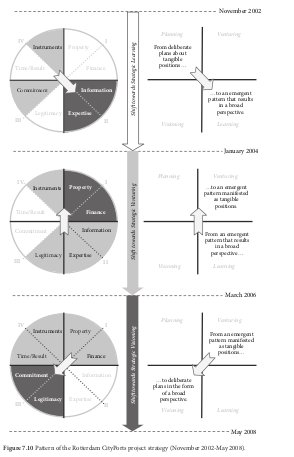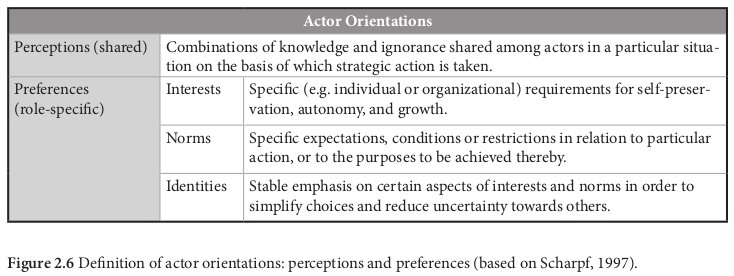Daamen uses a number of models in his study Strategy as force (2010), about providing a useful understanding of the strategies behind urban development project strategy. One of them a I agree with on the quadrant level, alhough it’s 8 segments are questionable.

What I do like are his examples and explanations about shifting strategies and strategy dynamics.

Also interesting is the approach of Actor orientations (Scharpf, 1997), describing that ‘specific combinations of knowledge and ignorance tend to be shared among the actors’. Like most other research, this study does not describe exactly how this model will help groups in real time.

Note that the elements of role-specific preferences are different from Aizen’s model about beliefs, intentions and behavior. I argue that a shared perspective is more effective when the basics (intentions / beliefs) are shared, in order to overcome loyalty related ambiguities of a coorperation in complex situations.